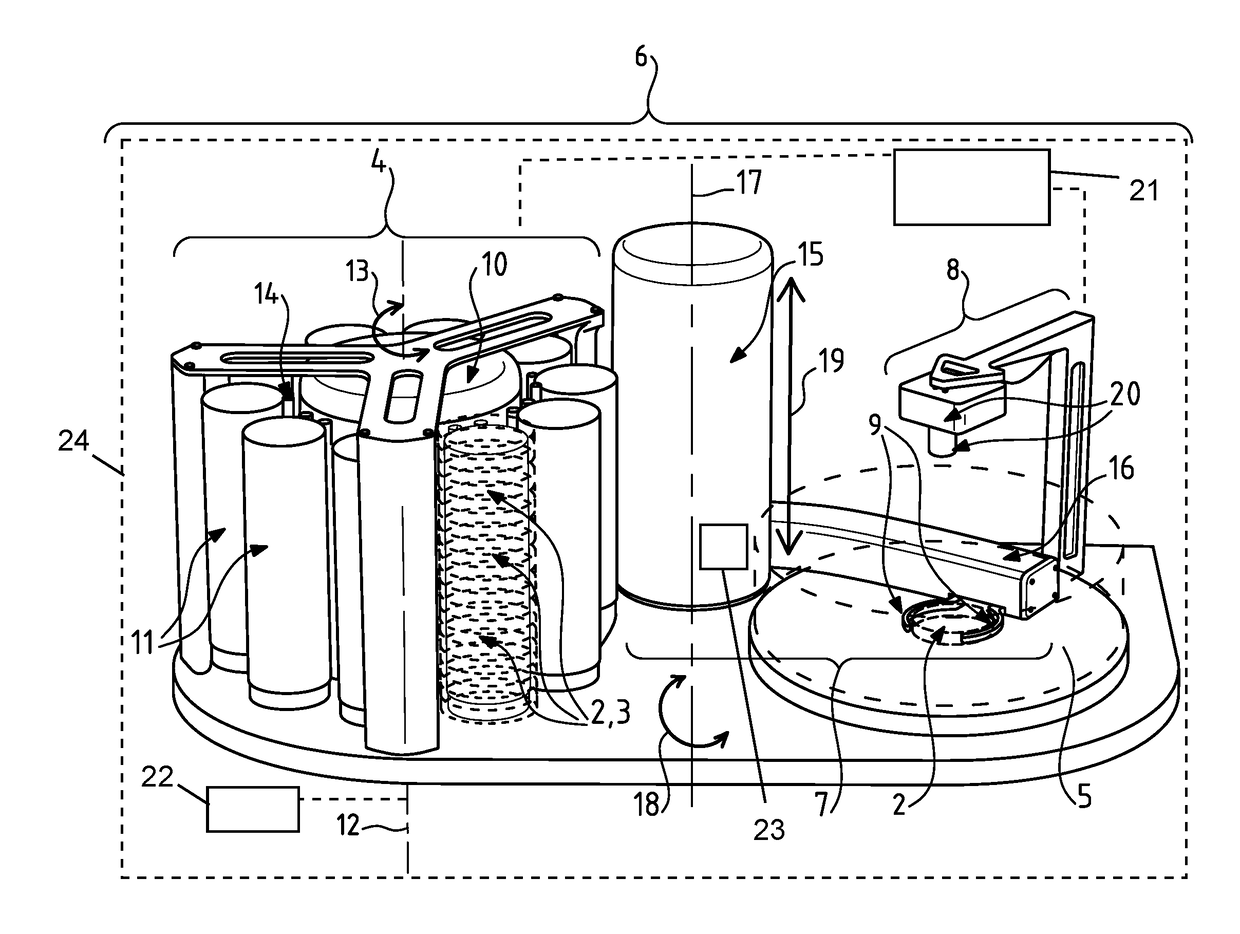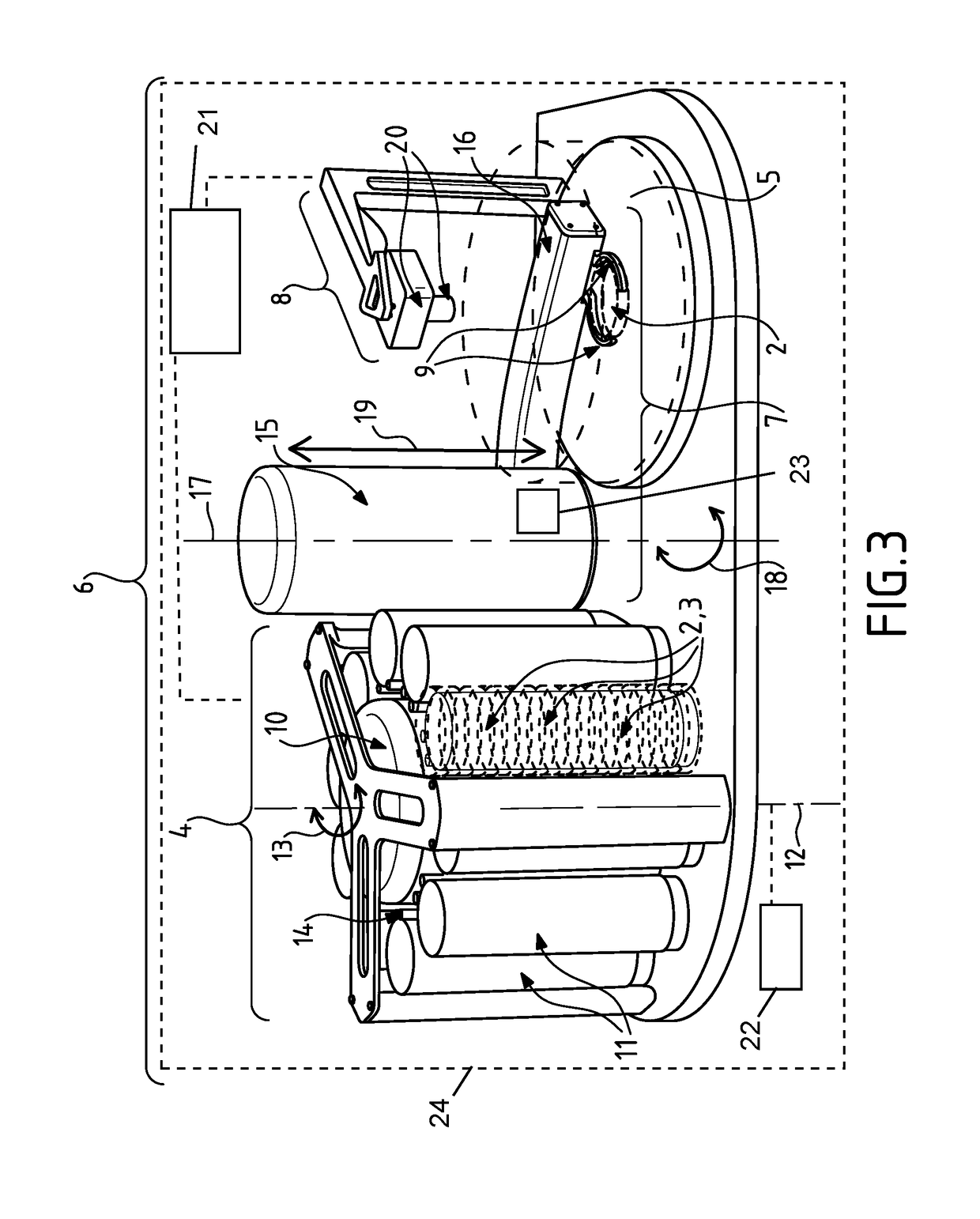Process and Device for Colony Counting
a technology of colony counting and counting process, which is applied in the field of microorganism detection, can solve the problems of inability to use a certain type of device, each sample to analyze is exposed to lighting, etc., and achieves the effect of reducing the time needed and reducing the counting error ra
- Summary
- Abstract
- Description
- Claims
- Application Information
AI Technical Summary
Benefits of technology
Problems solved by technology
Method used
Image
Examples
first embodiment
[0083]In reference to FIGS. 1 and 3, the process of the invention is depicted, the process comprising counting colonies present in a set of samples to analyze. Each sample 2 of this set of samples to analyze can be stored in a location 3 of a storage device 4. Each sample 2 of the set of samples to analyze comprises a culture medium support arranged to receive a plated culture medium. In certain practices, this process comprises, for each sample 2 of the set of samples to analyze, the following steps, which may but need not be done in order except as expressly required by the claims: a conveyance step of the sample 2, which may be referred to as an outward conveyance 101, from its location 3 to an analysis area 5; an acquisition step 102 during which is acquired a plurality of images of the analysis area 5 or a part of the analysis area 5 in which the sample 2 is positioned; a conveyance step 102 of the sample 2, which may be referred to as a return conveyance, from the analysis are...
fourth embodiment
[0089]Following the process, according to the invention, the sequence of steps as displayed in FIG. 1 is fully iterated, each step of the sequence, if iterated the same way than the sequence of steps, having an identical number of iterations.
[0090]In reference to FIGS. 2 and 3, a sequence of steps of the colony counting process according to this invention is shown and described following a fifth embodiment of the process according to the invention described for its differences with the first embodiment. For each sample 2 to analyze, the process is implemented following the sequence of steps hereinafter: step 101, then step 102, then step 104, then step 105, then step 103.
[0091]The outward conveyance 101 and the return conveyance 103 steps, iterated following an iteration of the sequence of steps as depicted in FIG. 2, have the same number of iterations. Each of the steps 102, 104, and 105 is iterated following an iteration of the sequence of steps as depicted in FIG. 2, independentl...
PUM
| Property | Measurement | Unit |
|---|---|---|
| size | aaaaa | aaaaa |
| size | aaaaa | aaaaa |
| size | aaaaa | aaaaa |
Abstract
Description
Claims
Application Information
 Login to View More
Login to View More - R&D
- Intellectual Property
- Life Sciences
- Materials
- Tech Scout
- Unparalleled Data Quality
- Higher Quality Content
- 60% Fewer Hallucinations
Browse by: Latest US Patents, China's latest patents, Technical Efficacy Thesaurus, Application Domain, Technology Topic, Popular Technical Reports.
© 2025 PatSnap. All rights reserved.Legal|Privacy policy|Modern Slavery Act Transparency Statement|Sitemap|About US| Contact US: help@patsnap.com



